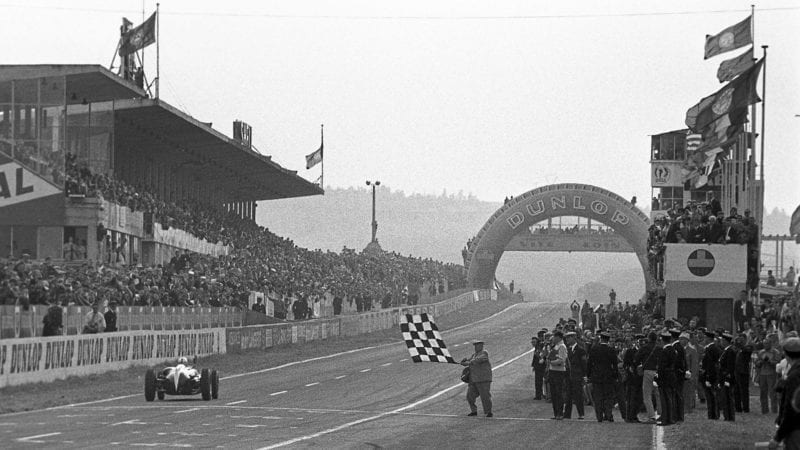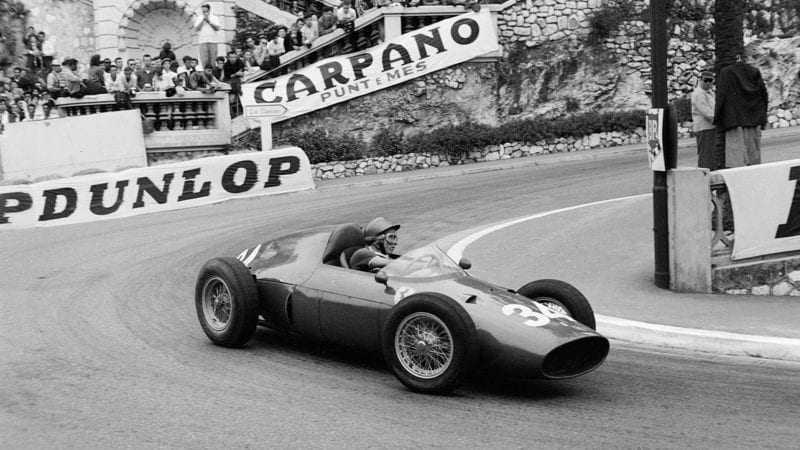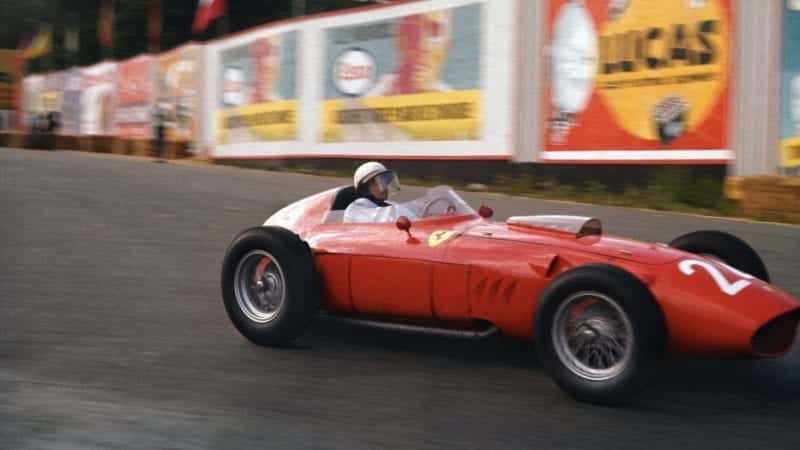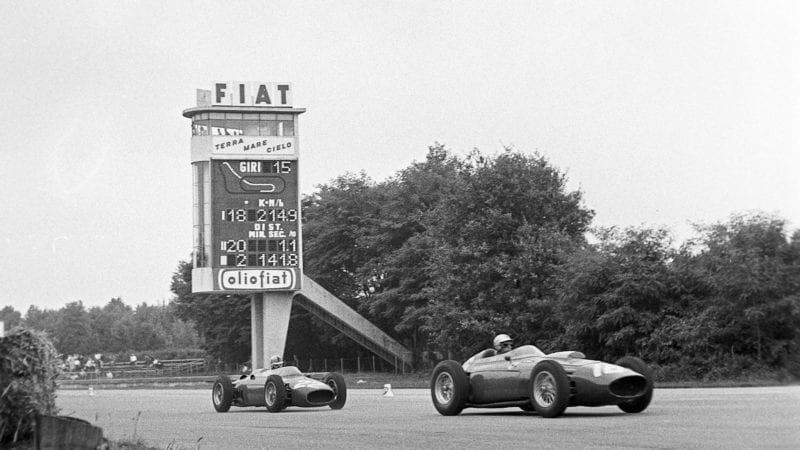The latter in turn was ahead of the game in terms of focusing on F1 – mainly farming out to semi-works outfits elsewhere – and running only two cars. Lotus was chaotic in comparison.
Just one of five of its Type 18s finished at Spa: Stirling Moss’s privateer car shed a rear wheel during practice and chucked the Monaco GP winner down the road and into hospital; Mike Taylor’s suffered steering failure and plunged him into the trees and thence to hospital; and the works cars of Innes Ireland and Alan Stacey crashed during the race, the latter with fatal consequences.
Only Jim Clark’s made it home, the Scot finishing fifth in his second GP and yet seriously considering his career choice as he climbed from a car spattered by the blood of Chris Bristow, the other fatality of this ill-fated race.
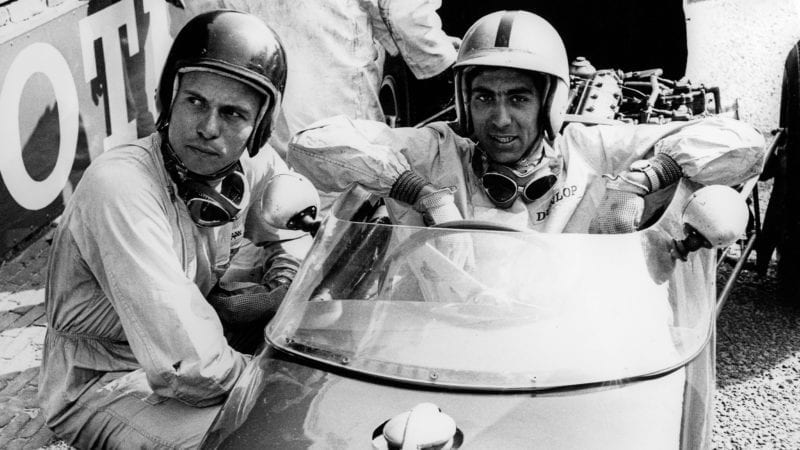
Clark with Stacey at Spa. Only one would be returning home
Bernard Cahier/Getty Images
The injured Moss’s enforced absence put Brabham in the box seat for the title and the Aussie was at the top of his game for the Grand Prix de l’ACF at Reims – 60 years ago today.
Once again he started from pole, and once again Phil Hill took the fight to him, the pair running nose to tail – even closer at one point, to the detriment of the Ferrari’s nose.
Hill led on occasion but generally it was the little Cooper that held sway, pulling more than 180mph, with or without a tow, and being nimbler under braking.
Eventually the Ferraris buckled, all three Dinos – the rear-engined car was being reworked at Maranello – succumbing to transmission failure before two-thirds distance.
Another F1 norm turned on its head.
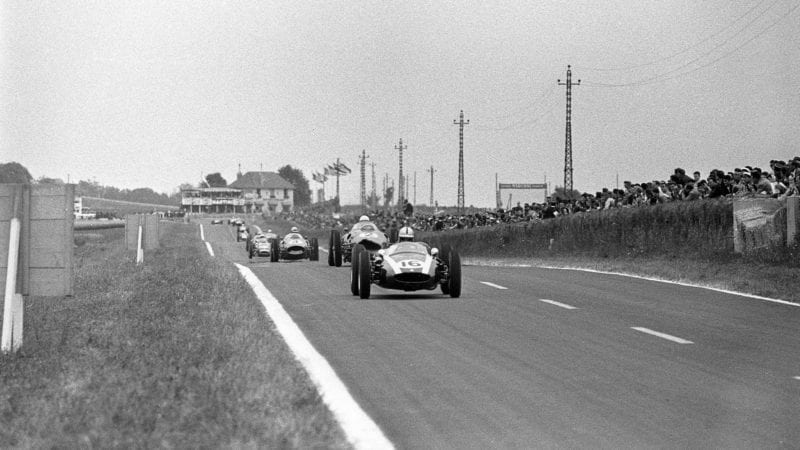
Brabham leads Phil Hill at Reims-Gueux
Bernard Cahier/Getty Images
Cooper – faster and more reliable – now had every base covered as it finished 1-2-3-4, Brabham winning as the Yeoman Credit cars of Gendebien and Henry Taylor sandwiched third-placed McLaren.
Enzo’s mood can be imagined.
There would soon come, however, a glimmer of hope.
The rear-engined Ferrari, now in 1.5-litre F2 guise and featuring sleeker bodywork – but not yet its shark’s nose – plus a revised clutch operation that enabled its tube frame to end beneath the gearbox, returned to competition three weeks later at the Solitude GP.
Driven by Wolfgang von Trips, it exhibited brilliant form in wet practice on this undulating, verdant and anti-clockwise road course: for a time it was a half-minute quicker than the rest. The track was at its driest when Clark – racing resolve renewed – nudged the German aristocrat from pole position.
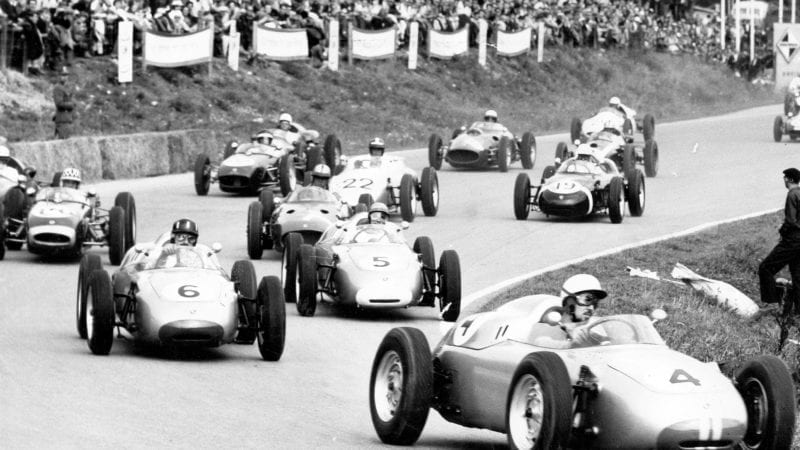
Bonnier ahead of Graham Hill and the chasing pack at Solitude
ullstein bild via Getty Images
The 20-lap race – some 142 miles – would be a humdinger and a foretaste of what was to come in the 1.5-litre F1, new for 1961.
Graham Hill, one of five Porsche drivers, led the opening lap. His team-mate Jo Bonnier led the second. Von Trips led the third. And Clark, after a slow start, moved to the front on the fourth.
The latter had won the Formula Junior support race for Lotus and thus was benefiting from extra knowledge of the track in the dry.
He was also exhibiting promising composure and gradually edging away from the pack.
